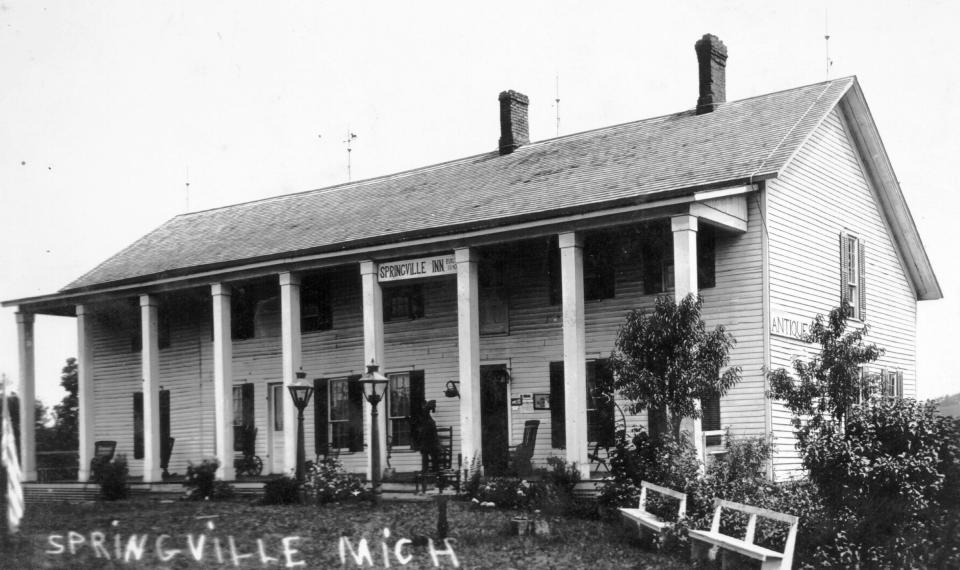Lenawee County History: Springville Inn a relic of 1840s county history

Early Lenawee County had no shortage of hotels and taverns.
Wherever a community popped up, innkeepers rolled out the red carpet to weary travelers, offering a place for them, and their horses, a place to bed down for the night.
The old Springville Inn, located on the north side of M-50 in the community of Springville, was one such establishment. Built in 1840, the two-story inn was about halfway between Adrian and Jackson. According to period accounts, it had 64 rooms and was a “social and civic center for the sturdy immigrants.” The inn was the site of local political meetings and horse races, in addition to offering rooms for sleep.

Not much is written about the Springville Inn during the early part of the 20th century. The inn came back into the spotlight in the 1920s. Frederick Hewitt, who bought the Walker Tavern in 1921 and restored that building, three miles from Springville, turned his sights on the Springville Inn. The family bought the inn around June 1926, and went to work on the old structure. By Memorial weekend 1927, the inn was ready, and Hewitt promoted his newest venture with mailed postcards that read: “From this tavern in an early day were held the horse races. Admission 25 cents. Children under 12 free.”
For reasons unknown, Hewitt also wrote that if M-50 were ever closed, visitors should “take the romantic Springville Mill road near the towers” to his establishment.
Hewitt promoted 11 spaces in the old inn, including a gaming room featuring old pewter; a tap room; the long dining room with Staffordshire china; former owner Trapper Babcock’s room full of pioneer hunting items; an oldtime kitchen and pantries; a child’s play room and trunk room; a curley maple room, and the old ball room, where popular dances of yesteryear were held.
Subscribe Now: For all the latest local developments, breaking news, and high school and college sports content.
A bronze plaque was placed in the front yard, referencing the inn’s historical significance. The Daily Telegram of June 4, 1927, declared the inn as a “striking example of early Michigan architecture, with its tall white pillars.” Hewitt furnished the bedrooms with high-posted canopied beds. “Old-fashioned benches line the walls of the ball room and a number of early musical instruments, long since discarded by modern dance orchestras, are displayed on the music platform.”
Visitors to catch a glimpse of Hewitt’s interpretation of the inn’s glory years could also take a rest on the front porch, which the Telegram stated “commands an inspiring view of the countryside, now famous throughout the midwest for its scenic beauty.”
It is not known when Hewitt, who died in 1969, sold his interest in the Springville Inn. A 1950s photo shows the inn for sale, after which time it passed into private hands. Several Lenawee County residents have recently reflected on living there many years ago, converted into sprawling, modern living quarters. The former inn still stands, looking much like it did during the pioneer days of Lenawee County.
— Dan Cherry is a Lenawee County historian.
This article originally appeared on The Daily Telegram: Springville Inn a relic of 1840s Lenawee County history
